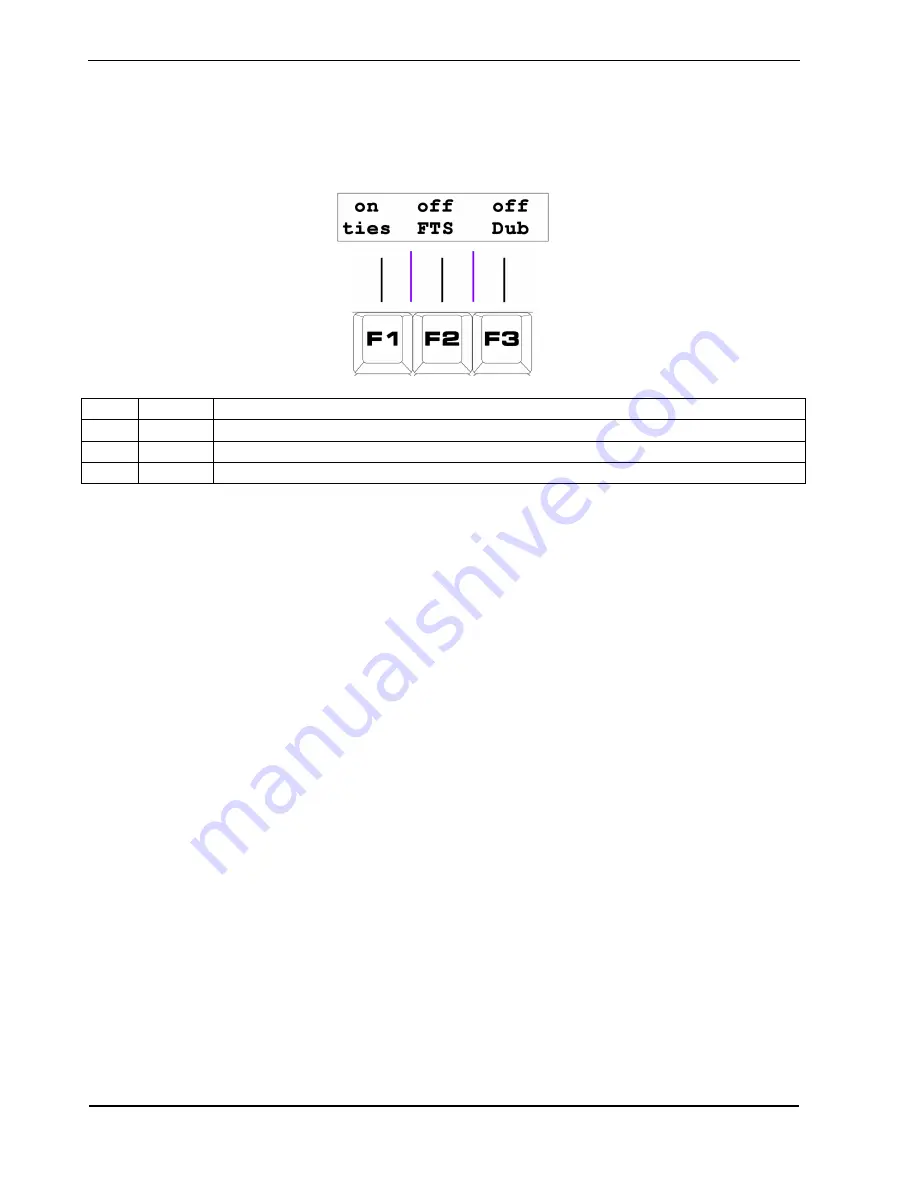
Sequentix Music Systems
P3 Sequencer User Manual
Page 114
Record Page 2 –
The second record page looks like this:
Key
Label Function
F1
ties
Toggles setting of
tie
where recorded notes overlap steps
F2
FTS
Toggles Force-To-Scale of recorded notes
F3
Dub
Selects special record modes
F1 – Ties
Soft-key
F1
toggles the record ties option.
With the “
ties
” option enabled, when a recorded note is held over more than one pattern step, or if the
note overlaps the next note, the steps will have the
tie
setting turned on.
With “
ties
” off, holding a single note over multiple steps will record a repeating pattern of single notes
on every step, and overlapped notes will be recorded with a gap between them.
F2 - FTS
The “
FTS
” option selects whether notes being recorded into a pattern should be forced to the current
scale before they are written to the pattern.
Note that even if FTS is turned off, notes will still be FTS’d according to the current settings.
The difference is that they will be recorded into the pattern with their original note values.
Summary of Contents for P3 SEQUENCER
Page 1: ...SEQUENTIX MUSIC SYSTEMS Ltd P3 SEQUENCER OPERATION MANUAL V3 1 006 2006...
Page 2: ......
Page 152: ...Sequentix Music Systems P3 Sequencer User Manual Page 152...
Page 154: ...Sequentix Music Systems P3 Sequencer User Manual Page 154...
Page 156: ...Sequentix Music Systems P3 Sequencer User Manual Page 156...






























